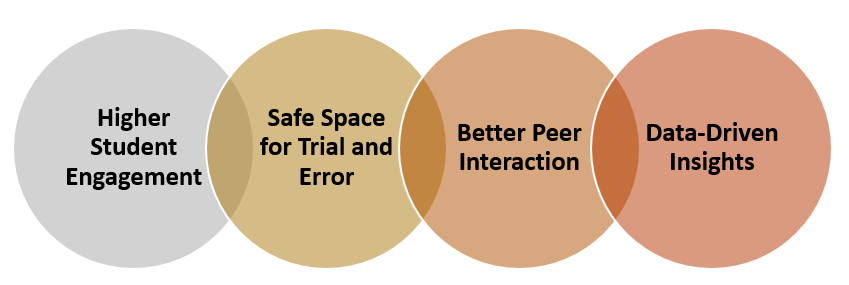Boost Student Engagement with Gamification: What 2025 Classrooms Are Doing Right
In an era where attention spans are shrinking and digital interruptions are rising, traditional classroom approaches often fall short. Enter gamification, a tactic that's reshaping how we learn.
In 2025, gamification is no longer a catchword; it’s a recognized method to boost engagement and advance knowledge retention, particularly for educators targeting to teach English as a foreign language or improve outcomes in teaching English as a second language (ESL).
Gamification in Learning
According to a report by Statista, the worldwide gamification market in education is expected to reach $25.7 billion by 2025, up from $11 billion in 2020. This growth is driven by the demand for communicating learning experiences along with digital tools that adjust to learner preferences.
Gamification refers to the use of game elements such as points, levels, badges, leaderboards, and challenges in non-game contexts, like classrooms or e-learning platforms. The aim is to make learning more engaging, collaborating, and fun, while also encouraging the participation.
Reasons Why Gamification Works: The Science Behind It
Thinking why Gamification works? Here are the valid reasons ---
Increased Motivation: Gamified education taps into fundamental motivators like achievement, recognition, and competition. When students unlock levels or earn badges, it generates a sense of accomplishment.
Improved Memory Retention: The University of Colorado found that students in gamified settings scored 14% higher in skill-based knowledge and 9% higher in retention tests compared to those in old-style settings.
Modified Learning Journeys: Gamified apps frequently allow learners to progress at their own pace, which is chiefly valuable when teaching English as a second language, where each student may start at a diverse proficiency level.
Prompt Feedback Loop: Games offer real-time feedback. This helps learners recognize mistakes early, inspiring faster learning and continuous improvement.
Gamification in Action: ESL and TEFL Classrooms
Gamification has shown amazing results in ESL (English as a Second Language) and TEFL (Teaching English as a Foreign Language) classrooms.
- Many TEFL teachers now use tools like Kahoot, Quizizz, and Classcraft to reinforce grammar rules, vocabulary, and pronunciation through real-time quizzes and collaborative challenges.
- Duolingo, one of the most common gamified language learning apps, has over 575 million users worldwide. Its leaderboard, everyday streaks, and XP points are precisely designed to keep learners engaged and returning daily.
- In a 2024 case study conducted across 50 ESL classrooms in Asia, gamified tools increased class participation by 40% and vocabulary retention by 29%.
Advantages of Gamification for ESL/TEFL Educators

- Gamified settings keep learners curious and eager to participate, reducing dropout rates.
- Language learners frequently hesitate due to fear of making mistakes. Games create a low-pressure environment to practice without judgment.
- Team-based activities and leaderboards foster collaboration and communication — important skills for language learners.
- Most gamified tools offer analytics dashboards that help educators track student progress and identify areas that need strengthening.
Gamification Trends to Watch in 2025
- AI-Powered Adaptive Games
- Virtual Reality (VR) Classrooms
- Story-Based Learning Games
- Integration with LMS Platforms
Whether you’re teaching English as a second language in a traditional classroom or looking to teach English as a foreign language online, simple gamification techniques can intensely transform your teaching consequences.
- Use flashcard challenges or bingo games for vocabulary practice.
- Assign badges or stars for weekly achievements.
- Create classroom leaderboards for participation or homework completion.
- Design treasure hunts or language puzzles as part of lesson plans.
To End With
In 2025, gamification is more than just play for teaching english as a second language, it’s an influential pedagogical tool that combines motivation with quantifiable outcomes. By integrating game mechanics into language learning, teachers can foster deeper engagement, better retention, and more enjoyable learning experiences. Whether you’re just starting your journey to teach English as a foreign language, or are a seasoned ESL educator, embracing gamification might be your next big teaching victory.




